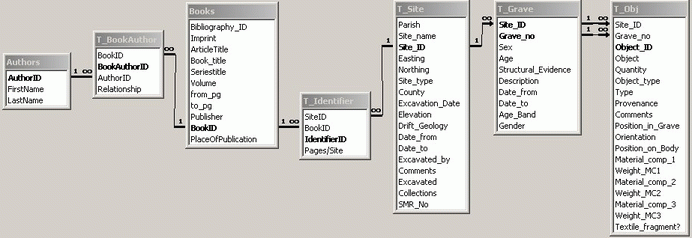Metadata and documentation
Databases and spreadsheets require metadata and documentation at a number of levels to ensure that they can be preserved and reused reliably. The following elements should be recorded and stored with the dataset:
| Element | Description |
|---|---|
| Project Title | |
| Name of database/spreadsheet file |
Repeat the following section for each worksheet/table within your spreadsheet/database:
| Element | Description |
|---|---|
| Name of worksheet/table | |
| Purpose of worksheet/table | |
| Number of rows of data | |
| Primary keys (database only) | |
| Foreign keys (database only) |
Repeat the following section for each column/field within your spreadsheet/database:
| Element | Description |
|---|---|
| Field Name | Name of database field or spreadsheet column. |
| Field Description | Full description of fields and codes or terminology used. Alternatively, codes used within a dataset can be supplied as a separate document. |
| Data type and field length (database only) |
The elements above essentially make up the ‘data dictionary’ commonly associated with databases. In addition, for databases in particular, it is also necessary to describe the relationships between tables either in words or by the inclusion of an entity relationship diagram.

Documentation can also include any extra features in the spreadsheet or database that require preservation, for example, formulae, queries, macros, and comments. These can generally be stored alongside the data as text files.



